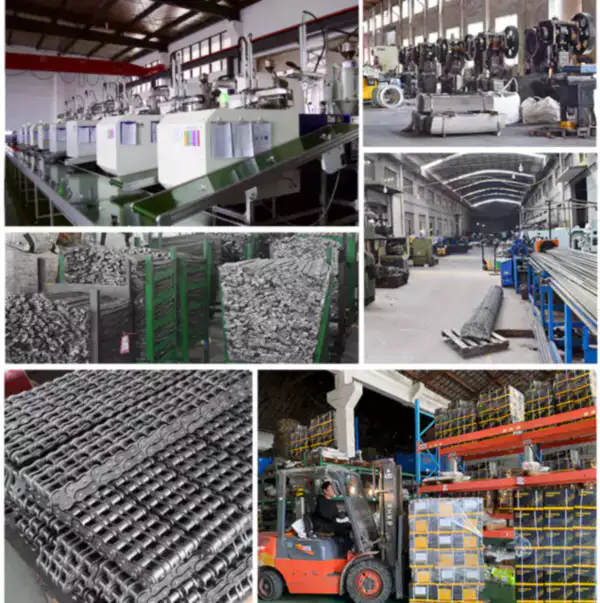Introduction
In this article, we will explore the various lubrication challenges that arise when dealing with food-safe gripper chains. We will delve into the complexities of maintaining optimal lubrication in these chains to ensure their smooth operation and longevity. Throughout the article, we will provide expert insights and practical solutions to help you address these challenges effectively.
Understanding Food-Safe Gripper Chains
Food-safe gripper chains are specialized chains used in the food industry for gripping, lifting, and conveying applications. These chains are designed to meet strict hygiene and safety standards to prevent contamination and ensure food quality. However, due to their unique characteristics, lubricating these chains can pose certain challenges.

Lubrication Challenges in Food-Safe Gripper Chains
1. Compatibility with Food Regulations
Food-safe gripper chains require lubricants that are compliant with food regulations. This presents a challenge as the lubricant must meet stringent criteria for food contact safety while still providing adequate lubrication for the chain's moving parts.
2. High Temperatures and Washdowns
In food processing environments, gripper chains are often subjected to high temperatures and frequent washdowns. This poses a lubrication challenge as the lubricant needs to withstand these harsh conditions without compromising its effectiveness.

3. Corrosion Prevention
Gripper chains used in food applications are exposed to moisture, acidic substances, and other corrosive agents. Lubrication plays a crucial role in preventing corrosion and ensuring the longevity of the chains. Selecting the right lubricant with excellent anti-corrosion properties is essential.
4. Cleaning and Relubrication Frequency
Food-safe gripper chains require regular cleaning and relubrication to maintain optimal performance. However, the cleaning process can remove the lubricant, making it necessary to find a balance between frequent cleaning and relubrication intervals to ensure efficient chain operation without compromising food safety.
5. Residue Build-up
Lubricants used in gripper chains can sometimes leave residue or contaminate the food products if they are not compatible with the application. Finding lubricants that minimize residue build-up and do not affect the food's quality is crucial.

Gripper Chains Purchasing Guide
| Factor | Considerations |
|---|---|
| 1. Food-Safety Certifications | Ensure the gripper chains comply with relevant food-safety regulations and standards. |
| 2. Material Compatibility | Select chains made from materials that are resistant to food acids, chemicals, and cleaning agents. |
| 3. Lubrication Requirements | Determine the specific lubrication needs of the gripper chains and choose appropriate lubricants. |
| 4. Chain Design and Size | Select gripper chains that are suitable for your application's load capacity and gripping requirements. |
| 5. Maintenance and Support | Consider the availability of maintenance services and technical support from the chain manufacturer. |
Sprockets for Gripper Chains
Gripper chains and sprockets are inseparable components, working in tandem to ensure smooth and efficient operation. Sprockets provide the necessary drive and engagement for gripper chains, making them essential for their proper functioning.

Our company offers a comprehensive range of sprockets specifically designed to complement gripper chains. These sprockets are meticulously crafted from high-quality materials to ensure durability and optimal performance. With our compatible sprockets, you can achieve precise chain engagement and maximize the efficiency of your gripper chain system.

Our Advantages
- Expertise: We have years of experience in manufacturing high-quality gripper chains and related components.
- Customization: We offer customized solutions to meet your specific application requirements.
- Reliability: Our gripper chains are known for their reliability and long service life.
- Technical Support: We provide comprehensive technical support throughout your purchasing and implementation process.
- Competitive Pricing: Our products offer excellent value for money without compromising on quality.

Q&A
Q: How often should food-safe gripper chains be relubricated?
A: The relubrication frequency depends on various factors such as chain speed, operating temperature, and environmental conditions. It is recommended to follow the manufacturer's guidelines and conduct regular inspections to determine the optimal relubrication intervals.
Q: Can I use standard lubricants on food-safe gripper chains?
A: No, standard lubricants may not comply with food safety regulations. It is crucial to use lubricants specifically formulated for food-safe applications to ensure compliance and prevent contamination risks.
Q: How can I prevent residue build-up on food-safe gripper chains?
A: Selecting lubricants with low residue formation properties and regular cleaning of the chains can help prevent residue build-up. It is essential to choose lubricants that are compatible with the specific application and do not affect the quality of the food products.
Edited by Zqq.
